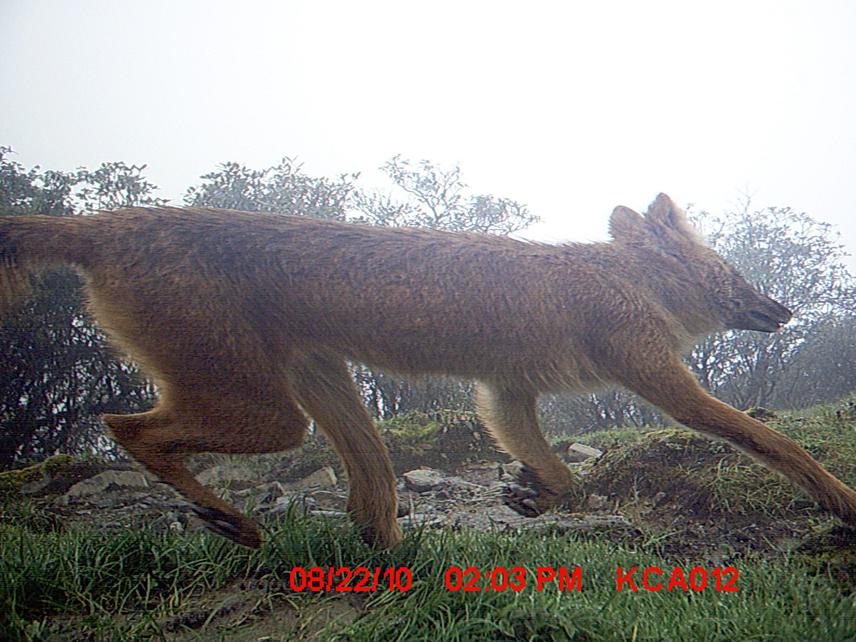Ambika Prasad Khatiwada
Other projects
2 May 2012
Community Stewardship for Dhole Conservation in Kangchenjunga Conservation Area, Nepal
10 Dec 2013
Community Based Asiatic Wild Dog or Dhole (Cuon alpinus) Conservation Project in Kangchenjunga Conservation Area, Nepal
29 Sep 2024
Developing Strategic Actions for Saving Asiatic Wild Dogs (Dholes) by Engaging Communities and Conservation Stakeholders in Nepal
The aim of this project is to understand the ecology of dhole and to aware local community for its conservation in Kangchenjunga Conservation Area (KCA).

The dhole is one of the least studies canid in the world. Its population has been estimated to be fewer than 2,500 in wild. The dhole inhabits in the widest range of climates in the canid family – from freezing cold to tropical heat. The species is severely threatened by habitat fragmentation, declines in their prey species and diseases transmission by feral/domestic dogs. Though listed as ‘endangered’ by IUCN, the true studies are lacking. Very little is known about ecology, behaviour and status of the dhole in South Asia and even the baseline information is absent in Nepal.
This project will be carried out in KCA covering an area of 2035 sq km. Local people regard the dhole as “pest of the jungle” and consequently these animals are commonly trapped, shot or poisoned. Due to a lower ‘charisma factor’ than other carnivores living in the same region (e.g., the snow leopard), the dhole has received little scientific attention. Dhole is killing domesticated animals in and around KCA but- yet the studies have not been carried out about its ecology, conservation issues and associated threats.
The ultimate objective of this project is to save the dhole from the brink of extinction. This can only be done if we gain a better understanding for this species needs and ecology, and if we able to generate accurate information about their importance for natural ecosystems.
The project contributes to educate and motivate the public as well the wildlife professionals including park authorities to invest in dhole conservation and save their natural heritage. Increasing human population; expansion of agricultural land with slash/burn practice; shifting cultivation and more dependency of rural people on forest for daily subsistence in and around KCA causing dhole habitat fragmentation. This is leading to more interaction of dhole to human and livestock.
Ecological importance, conservation status, overall conservation issues and associated threats of dhole will be known in KCA, which will excel the participatory conservation efforts at local level. The most important outcome of this project is the baseline information for Nepal which will be important to develop national conservation strategy.